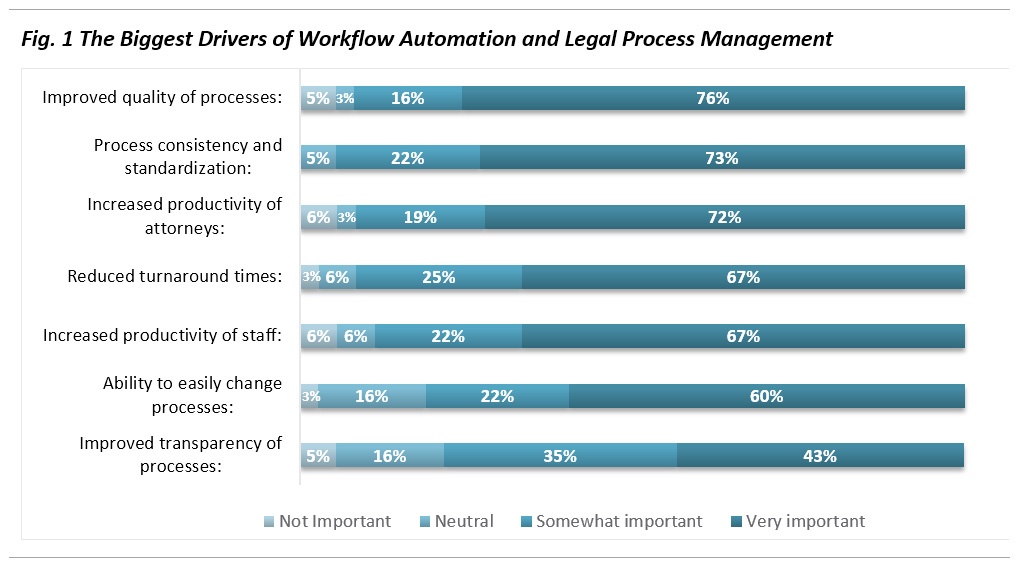
The Growth of Process Automation in IP Management
Intellectual property groups typically rely on “docketing systems” as the central resource for managing task assignments, deadlines and other case-related information. While traditional docketing systems provide important country rules and PTO procedures, these systems tend to be limited to their workflow capabilities, including the ability to automate processes across the IPM lifecycle or to meet unique client-defined requirements.
In seeking to improve operational performance, and to better manage the work of innovation, we find that leading IP groups now embrace advanced workflow technology as a key to their success. Workflow solutions can deliver rapid returns on investment because they improve resource utilization, work-cycle times and quality-control costs.
In addition to the efficiency and cost benefits, workflow solutions also benefit users by improving the visibility of and confidence in the work process. With defined workflows, previous “black box” processes are more open and accessible to the user, thereby increasing satisfaction and reducing frustration.
Over the last few years, our research and advisory work with intellectual property teams has identified a growing trend in the interest and need for broader, more end-to-end IPM process management. Many of the most important drivers (see Fig. 1) of workflow focus on core objectives, such as increased productivity (91%), improved quality of processes (92%) and better process consistency and standardization (95%).
Our recent benchmarking shows that the percentage of the market rating these drivers as ‘Very Important’ rose sharply between 2013 and 2015, in some cases more than three-fold. For instance, management sentiments about the importance of quality of processes rose from 27 percent to 76 percent in the short two-year period.

In considering the opportunities of workflow automation, we have identified the following “best practice” IPM processes as strong candidates for automation:
- Invention disclosure submission
- Disclosure review and approval (e.g., patent review boards)
- Trademark search and clearance
- Global filing strategy
- Outside counsel assignment
- Prior art and technical literature search requests
- Application draft, review and approval
- Office action draft, review and approval
- Foreign filing decisions
- IDS and related art review and approval
- Maintenance fee payment review and approval
- Asset mapping (e.g., to products, technologies, projects)
- Portfolio reporting
- Affidavit of use and related formalities
- Assignments
- Non-disclosure agreement request and approval
- Requests for release of technical information
- License agreement reviews
- Billing review and approval (e.g., outside counsel e-Billing)
In reviewing the workflow capabilities of advanced IPM systems, we find strong capabilities in specific core IPM process areas. Leading solution vendors demonstrate their abilities to work closely with clients to define and deliver a number of new “out of the box” workflows to clients. As stepping stones, companies are usually able to work with these pre-defined workflows with little modification, though the level of configurability varies significantly between vendors.
Where the IPM systems differentiate themselves is in their ability to support unique, company-specific business processes that require custom workflows. The solution options have improved significantly in the last 12-24 months, with a number of providers introducing advanced capabilities informed by business process management (“BPM”) best practices. With these more flexible and capable workflow modules, organizations can design, build and deploy custom workflows more easily and without the need for heavy technical development. Evaluating the various systems, however, requires a close examination of how the tools are architected and how they can address a client’s specific needs and use cases, including the ability to integrate with key enterprise information systems for full lifecycle IP management.


